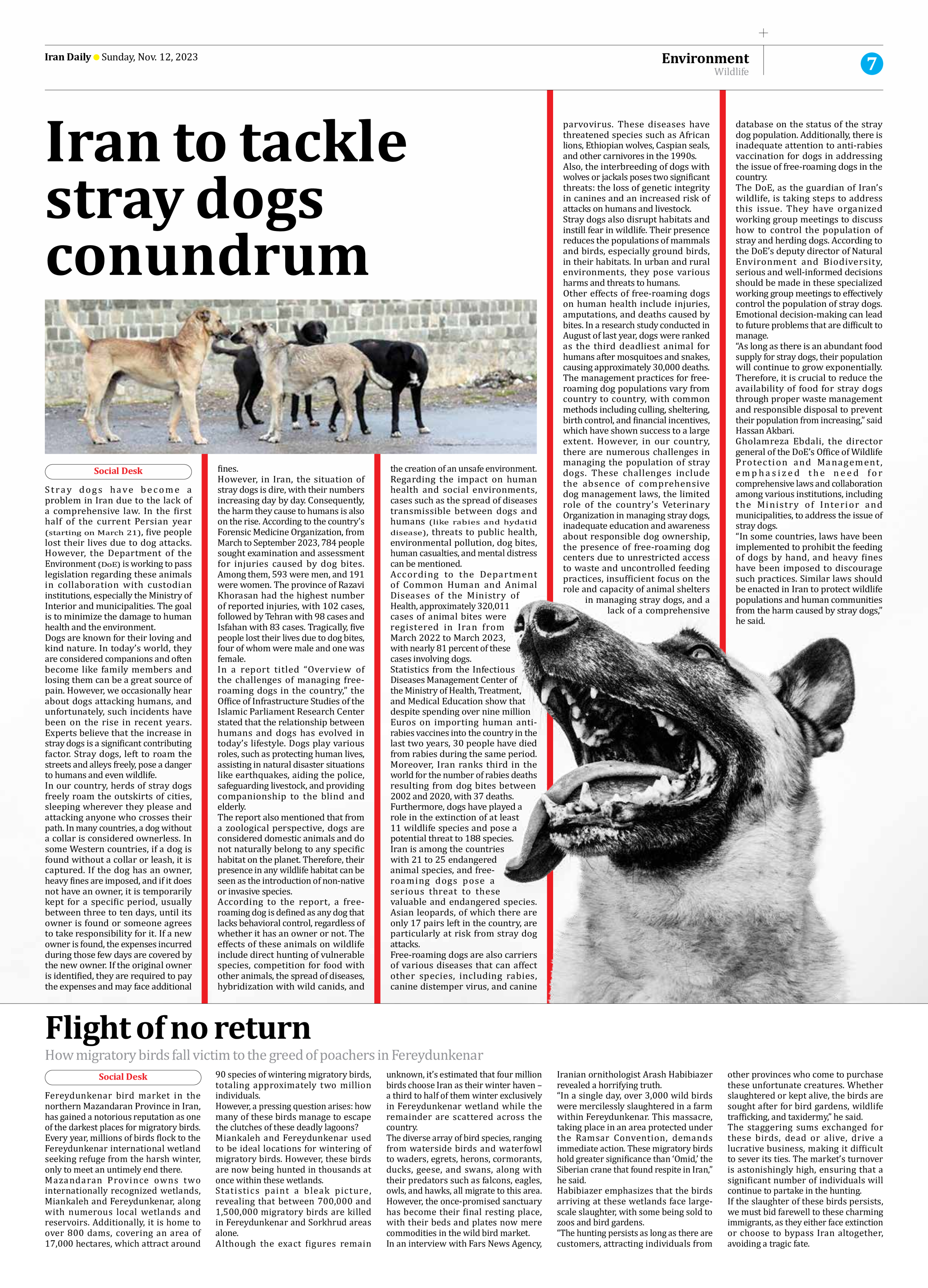
Flight of no return
How migratory birds fall victim to the greed of poachers in Fereydunkenar
Fereydunkenar bird market in the northern Mazandaran Province in Iran, has gained a notorious reputation as one of the darkest places for migratory birds. Every year, millions of birds flock to the Fereydunkenar international wetland seeking refuge from the harsh winter, only to meet an untimely end there.
Mazandaran Province owns two internationally recognized wetlands, Miankaleh and Fereydunkenar, along with numerous local wetlands and reservoirs. Additionally, it is home to over 800 dams, covering an area of 17,000 hectares, which attract around 90 species of wintering migratory birds, totaling approximately two million individuals.
However, a pressing question arises: how many of these birds manage to escape the clutches of these deadly lagoons?
Miankaleh and Fereydunkenar used to be ideal locations for wintering of migratory birds. However, these birds are now being hunted in thousands at once within these wetlands.
Statistics paint a bleak picture, revealing that between 700,000 and 1,500,000 migratory birds are killed in Fereydunkenar and Sorkhrud areas alone.
Although the exact figures remain unknown, it’s estimated that four million birds choose Iran as their winter haven – a third to half of them winter exclusively in Fereydunkenar wetland while the remainder are scattered across the country.
The diverse array of bird species, ranging from waterside birds and waterfowl to waders, egrets, herons, cormorants, ducks, geese, and swans, along with their predators such as falcons, eagles, owls, and hawks, all migrate to this area. However, the once-promised sanctuary has become their final resting place, with their beds and plates now mere commodities in the wild bird market.
In an interview with Fars News Agency, Iranian ornithologist Arash Habibiazer revealed a horrifying truth.
“In a single day, over 3,000 wild birds were mercilessly slaughtered in a farm within Fereydunkenar. This massacre, taking place in an area protected under the Ramsar Convention, demands immediate action. These migratory birds hold greater significance than ‘Omid,’ the Siberian crane that found respite in Iran,” he said.
Habibiazer emphasizes that the birds arriving at these wetlands face large-scale slaughter, with some being sold to zoos and bird gardens.
“The hunting persists as long as there are customers, attracting individuals from other provinces who come to purchase these unfortunate creatures. Whether slaughtered or kept alive, the birds are sought after for bird gardens, wildlife trafficking, and taxidermy,” he said.
The staggering sums exchanged for these birds, dead or alive, drive a lucrative business, making it difficult to sever its ties. The market’s turnover is astonishingly high, ensuring that a significant number of individuals will continue to partake in the hunting.
If the slaughter of these birds persists, we must bid farewell to these charming immigrants, as they either face extinction or choose to bypass Iran altogether, avoiding a tragic fate.







